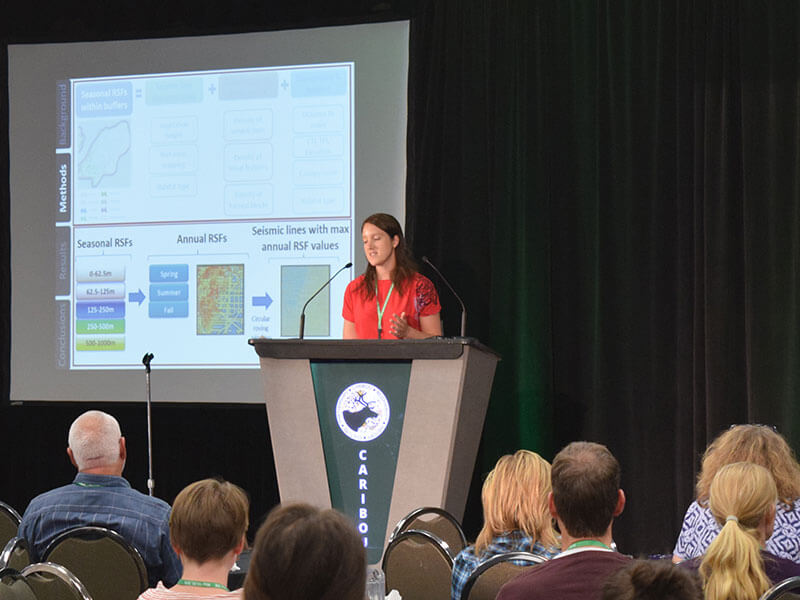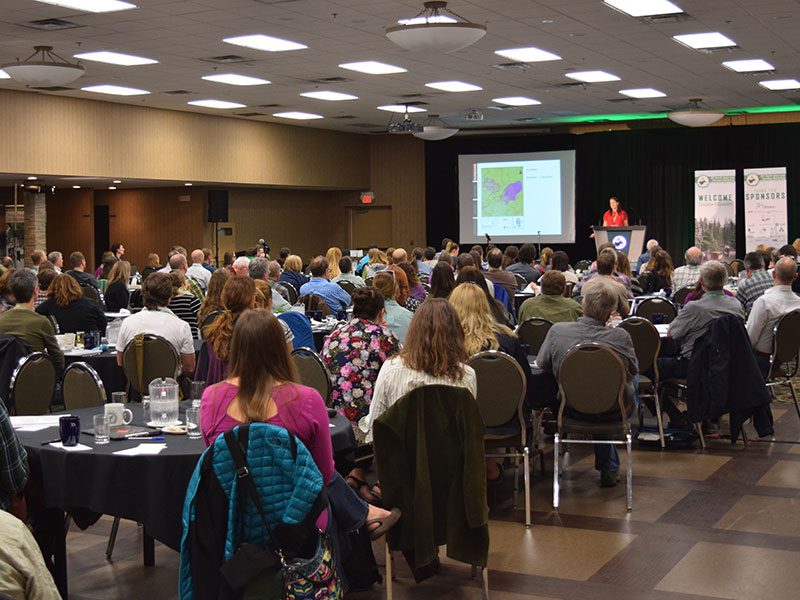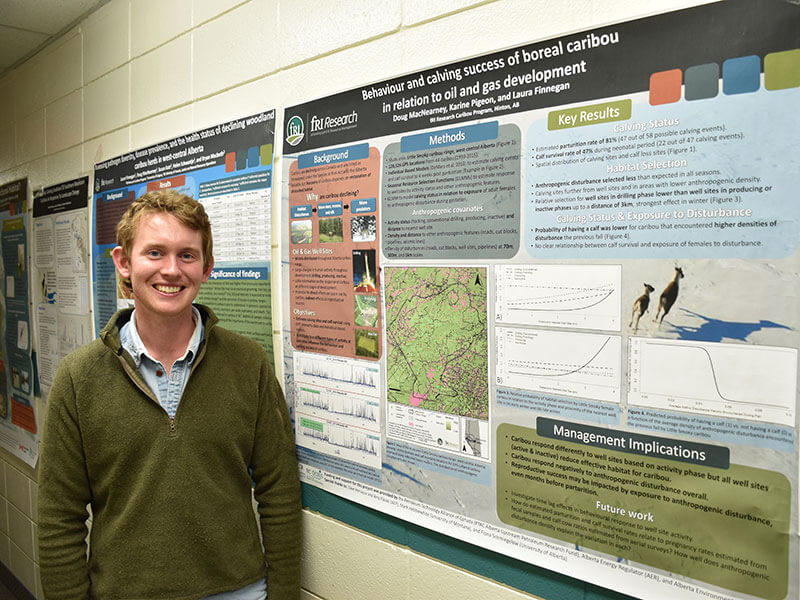The Caribou Program attended the 2016 North American Caribou Workshop in Thunder Bay. Laura Finnegan presented during a the technical session.
Abstract
Habitat degradation is believed to be the ultimate cause of Boreal and mountain caribou population declines, and there is an urgent need to implement habitat restoration. In Alberta, the extent of the current disturbance footprint from linear features is such that an informed prioritization approach to habitat restoration will be beneficial. Linking LiDAR measurements of vegetation regeneration upon seismic lines and GPS telemetry data, we investigated the relationship between vegetation height and the use of seismic lines by grizzly bears, wolves, and caribou within five caribou ranges. Over 55,300 km (77%) of seismic lines established before 1995 have a current average vegetation height of less than 1.5 m. Animal response to seismic lines varied seasonally and was related to regeneration stage. Our results suggest that bear use of seismic lines is primarily governed by access to food while wolves and caribou may use seismic lines for travel. We described a system to prioritize seismic lines for restoration based on the probability of overlap between caribou and predators. This research is the first to prioritize habitat restoration for caribou based on connecting animal response to regeneration and yields important tools towards initiating restoration of caribou habitat across the Boreal forest.









